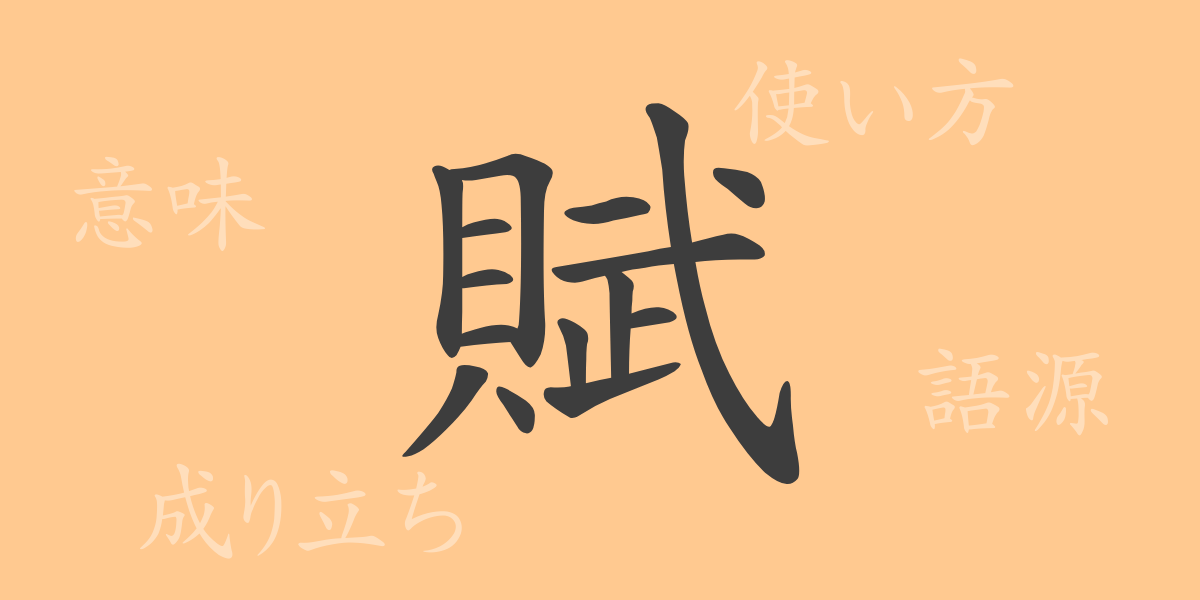常用漢字(jouyou kanji) in Japan are a collection of characters frequently used in daily life. Among them is the kanji “賦(fu)”. In this article, we will delve into the meaning, origin, and usage of “賦(fu)”, exploring its role and charm in the Japanese language. By glimpsing into the history and culture embedded in each kanji, let’s embark on a journey to rediscover the profound depth of words.
Origin of 賦(fu)
The kanji “賦(fu)” can trace its origins back to ancient Chinese literature. Originally, it was used to denote burdens or taxes and gradually evolved to refer to literary works and the act of giving. This transition illustrates how language evolves with societal changes.
Meaning and Usage of 賦(fu)
In modern Japanese, “賦(fu)” is primarily used in the literary field, particularly to mean the creation of poems or writings. It is also used to denote the imposition of taxes or burdens. Understanding the various contexts in which this kanji is used is essential to appreciating the richness of the Japanese language.
Reading, Stroke Count, and Radical of 賦(fu)
The kanji “賦(fu)” has multiple readings in Japanese, and its meaning can change depending on the reading.
- Reading: In On’yomi (音読み), it is read as “フ(fu)”, and in Kun’yomi (訓読み), it is read as “ぶんなう(bunnau)”.
- Stroke Count: The kanji “賦(fu)” consists of 15 strokes.
- Radical: The radical of this kanji is 貝(kai), known as 貝部(kaihen).
Idioms, Proverbs, and Expressions Using 賦(fu)
Idioms and expressions containing “賦(fu)” enrich the expressive power of the Japanese language. For example, “賦税(fuzei)” means taxes, referring to the burdens imposed by the state or local governments on citizens. “詩賦(shifu)” refers to the creation of poetry and is a term frequently used in the literary world. These idioms and expressions exemplify the expansive meanings that a single kanji can convey.
Conclusion on 賦(fu)
The kanji “賦(fu)” is a crucial element that supports the rich expressions of the Japanese language due to its diverse applications. From denoting taxes to referring to literary works, language continues to evolve with culture and time. Understanding such backgrounds allows us to deeply appreciate the depth of the Japanese language and the history and culture embedded in each kanji.

























